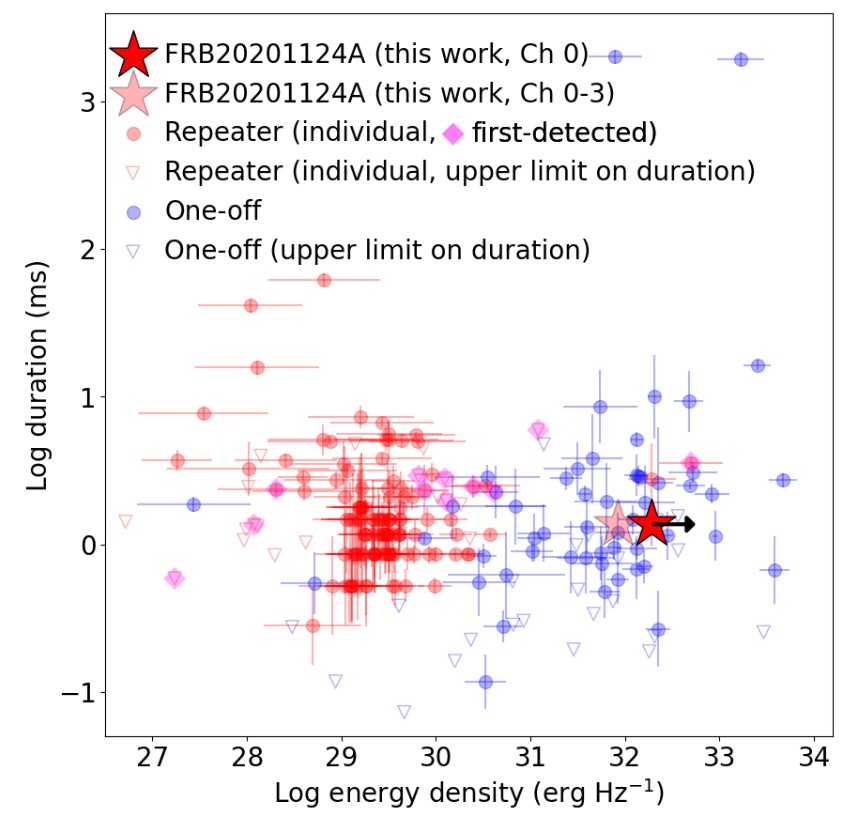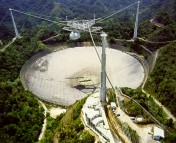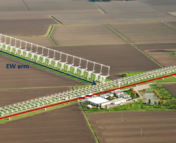Title: Detection of a bright burst from the repeating FRB 20201124A at 2 GHz
Authors: Sota Ikebe, Kazuhiro Takefuji, Toshio Terasawa, et al. (with 14 additional authors)
First Author’s Institution: Department of Astronomy, School of Science, The University of Tokyo
Status: Accepted for publication in the Publications of the Astronomical Society of Japan [closed access]
A bright burst of radio waves from another galaxy has thrown a wrench in our understanding of how they’re created! Today’s paper is all about fast radio bursts (FRBs), superpowered pulses of radio emission with unknown origins. Since the first FRB discovery in 2007, there has been a lot of debate over what astronomical sources emit FRBs– but we’re confident that it’s a natural phenomenon, and not aliens trying to contact us! You can tell how active this research field is, just based on the pages and pages of Astrobites written on FRBs. Today’s paper reports on the use of a 64-meter telescope at the Usuda Deep Space Center/JAXA in Japan to re-detect the fast radio burst named FRB20201124A. This re-detection was the first FRB discovered by a Japanese observatory, but that’s not the only reason it’s exciting: not only was this burst one of the highest-energy pulses detected from this source, this is the highest observing frequency at which scientists have detected emission from this FRB!

Fast radio bursts are extremely short (milliseconds to seconds long) bursts of radio waves from astronomical objects. But they’re remarkably energetic: a bright FRB can emit as much energy in a few milliseconds as our Sun does in a few days to weeks! Radio waves are dispersed as they travel through the material in the interstellar medium, meaning the high-frequency part of the burst arrives at our telescope before the low-frequency part. Figure 1 shows the waterfall plot of this detection, which lets you see the FRB as a function of observing frequency and time. You can see that the FRB is a broadband signal, meaning it’s detected at frequencies all across the observing band (not just a very narrow window), with the lower-frequency parts of the burst being delayed more in time. In fact, FRBs show such high levels of dispersion that the intervening matter in our Milky Way alone is not enough to explain it– the light from this FRB must be traveling from another galaxy, through the intergalactic medium, and through our Milky Way to reach us. In fact, the sky positions of several FRBs have been localized so precisely that we’ve been able to associate them with host galaxies and speculate about the environments that FRBs tend to reside in.
Some FRBs are only seen once and never re-detected, while others can continually repeat for years. The split between repeating and non-repeating FRBs has led to the tentative assumption by some astronomers that FRBs can’t be caused by only one source class, but maybe two; supernovae and other cataclysmic events (like black hole mergers) may create one-off FRBs, while repeating FRBs may be emitted by neutron stars, magnetars, or other objects which last for long periods of time.
Discovered in 2020 by the CHIME-FRB collaboration in Canada, FRB20201124A is one of the most active repeating FRBs. After eight hours of observing time staring at the location of this FRB, today’s authors only detected one burst when observing at 2.2 GHz, and none at 8.4 GHz. These are very high observing frequencies– no FRB has had emission detected above 8 GHz, and FRB20201124A specifically had never been detected above roughly 1.8 GHz before the release of this paper. Notice that in Figure 1, the burst is brightest at lower frequencies (Channel 0) and gets dimmer at higher frequencies.

Figure 2 shows this singular pulse after being corrected for dispersion, as well as the FRB’s profile– the brightness as a function of time, added up over the different frequency channels, to make a sort of ‘fingerprint’ for this FRB. The observatory’s machines were calibrated to be sensitive to weaker pulses, and this burst was so unexpectedly bright that it was literally off the charts!
Could We Ask FRBs to Repeat Themselves?

The brightness of this burst is noteworthy, since analyses of the FRB population suggest that repeating FRBs are less energetic than one-off FRBs on average. Figure 3 shows a scatter plot of the width (duration) and energy density of many one-off and repeating FRBs, with a pretty distinct separation between repeating FRBs (red points) and non-repeating FRBs (blue points). This detection of FRB20201124A (the red stars) is so energetic that its location on the scatter plot makes it look like a one-off FRB; plus, today’s authors only found this single burst in 8 hours of observation. Today’s authors knew they were observing a repeating FRB, but imagine if these observations had been the first ever taken of this source, and no one knew it would repeat. The fact that they only saw one burst, and it was much brighter than a typical repeating FRB, might lead them to the conclusion that FRB20201124A would never repeat, and future studies might not prioritize taking future observations of this FRB.
Our ultimate goal is to find a satisfactory explanation for the sources of all FRBs, repeating and non-repeating. This discovery opens the door to the possibility that many of these “one-off” FRBs are actually repeaters as well, and have just unluckily never been re-detected. In fact, previous FRB population analyses have argued that the estimated occurrence rate of one-off FRBs exceeds the occurrence rate of cataclysmic events which could create them– this implies that some of them could actually be repeaters. Today’s detection of this FRB is certainly motivation to look back at these one-off FRBs, to see if they may actually repeat themselves!
Astrobite edited by Pratik Gandhi
Featured image credit: ESO/M. Kornmesser




